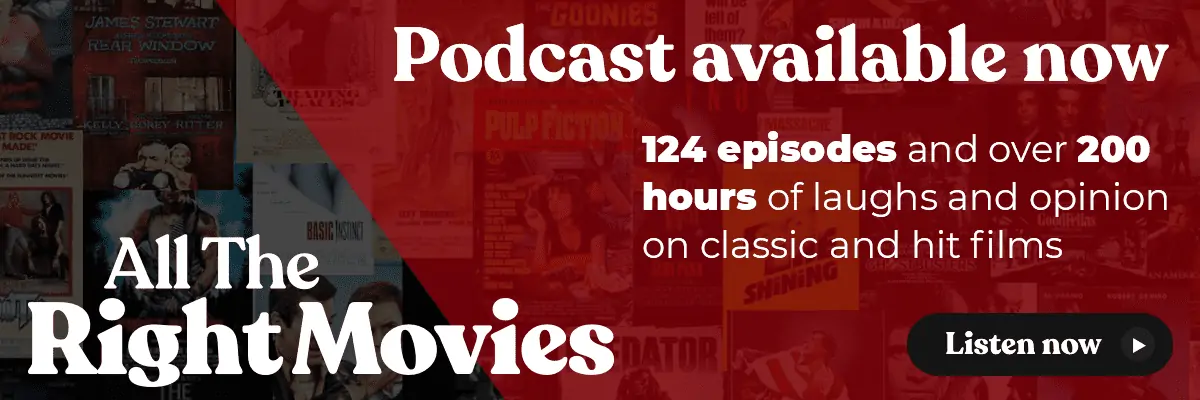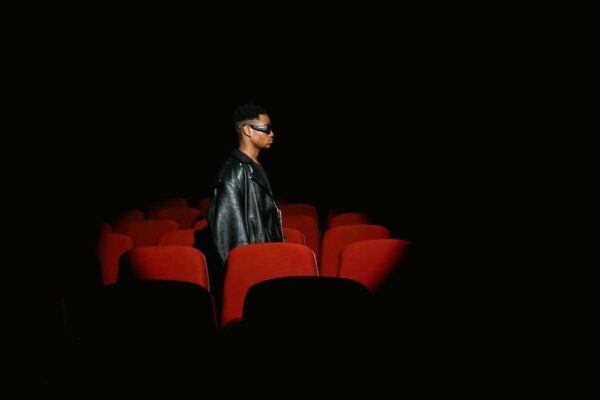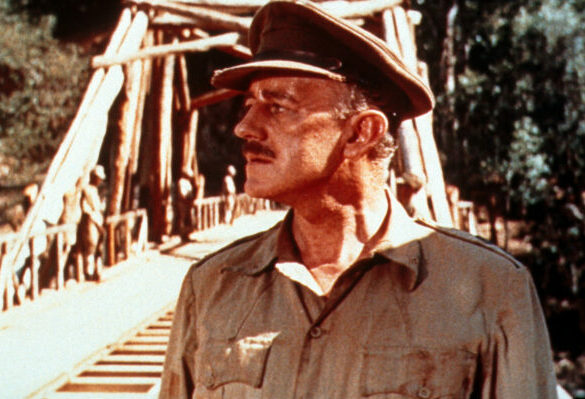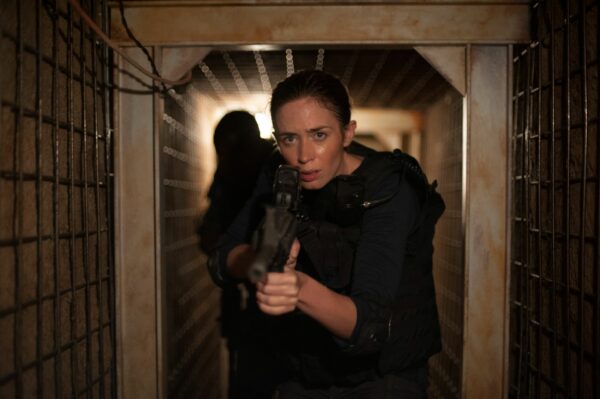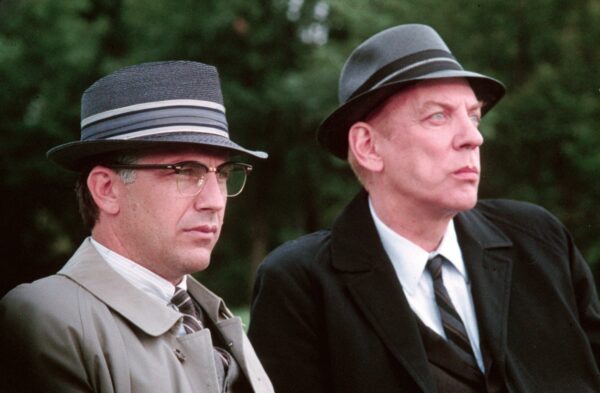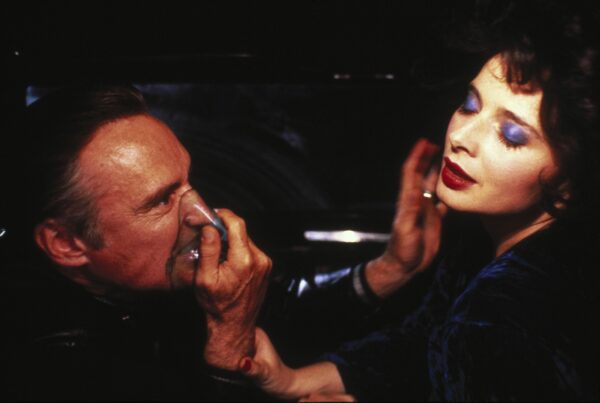
Super Mario Bros. was the original video game movie – and had a troubled production to say the least. We’re telling the story behind the scenes with 20 huge facts about Super Mario Bros.
The 2023 Super Mario Bros. movie earned over $1bn and had the biggest opening of an animated film in history. However, this isn’t the first time that the popular video game franchise has been adapted for the big screen. 30 years ago, there was a live action adaptation of Super Mario Bros. which didn’t end up as the same success story as the 2023 film. In fact, things went very badly. Here’s the incredible story of the 1993 film, via 20 great facts about Super Mario Bros.
1. The Director of The Killing Fields wanted to produce a Super Mario Bros. Film
Roland Joffé (who had been Oscar-nominated for 1984 film The Killing Fields) was the first person to put forward the idea of a Super Mario Bros. movie during a script meeting at his production company Lightmotive. The director (who had won a Palme d’Or for The Mission in 1986) was keen to get into producing. And he believed the massive popular video game series could be the ticket to success.
Joffé met with the founder and president of Nintendo of America, Minoru Arakawa. Joffé presented an initial draft of the script. Arakawa was so impressed he arranged for a meeting between Joffé Hiroshi Yamauchi, the president of Nintendo.
The pitch went exceedingly well for Joffé. He left with a $2 million contract giving him temporary control of Super Mario, Nintendo’s most popular character who has appeared in over 200 games. The Italian plumber resides in the fictional Mushroom kingdom and his adventures often involve him rescuing the beautiful Princess Peach from his nemesis Bowser (AKA King Koopa) with the help of his brother Luigi.
Initially, Joffé hired Greg Beeman to direct the film. At the time Beeman had only directed one film, the teen comedy License to Drive. That film was released in 1988 and had been a surprise success at the box office. However, critical response had been poor and as a result the distributors refused to work on Super Mario Bros. if Beeman’s name was attached.
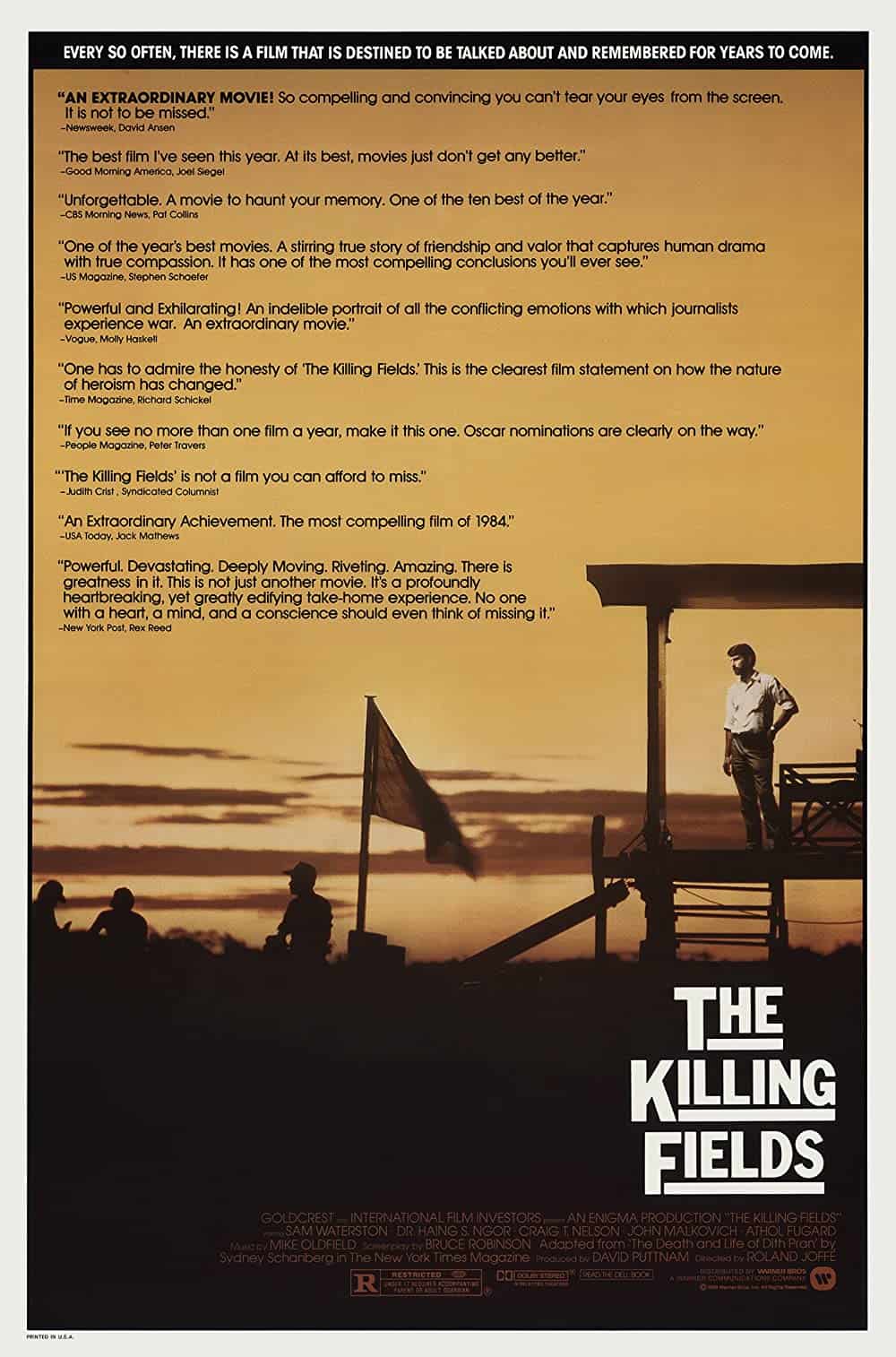
The Killing Fields movie poster
2. The directors who created Max Headroom were hired next
Needing another director quickly, Joffé tried to offer the role to Ghostbusters director Harold Ramis. However, Ramis decided to leave the project, which was probably a smart move considering all the issues that would occur.
Joffé decided to hire a husband and wife directing team, Rocky Morton and Annabel Jankel. The duo were most famous for directing music videos, but their biggest claim to fame was creating The Max Headroom Show. This was a satirical science fiction television series that featured the titular media personality.
The pair were also very experienced in using CGI. They had directed the first entirely CGI advert (for Pirelli tyres). So, they wouldn’t be afraid to use computer graphics for Super Mario Bros.
They seemed like the right choice as their background was in animation and comic books. In their own words, they described themselves as being from the, “Tim Burton school of filmmaking”.
Morton and Jankel’s vision to adapt the video game was to make it appear more dark and grimy. They wanted to capture the similar tone portrayed in films like Batman (1989) and Teenage Mutant Ninja Turtles (1990). Both films had been a major hit and broken box office numbers. Therefore, it made sense for Morton and Jankel to tap into the same audience that had seen both those films.
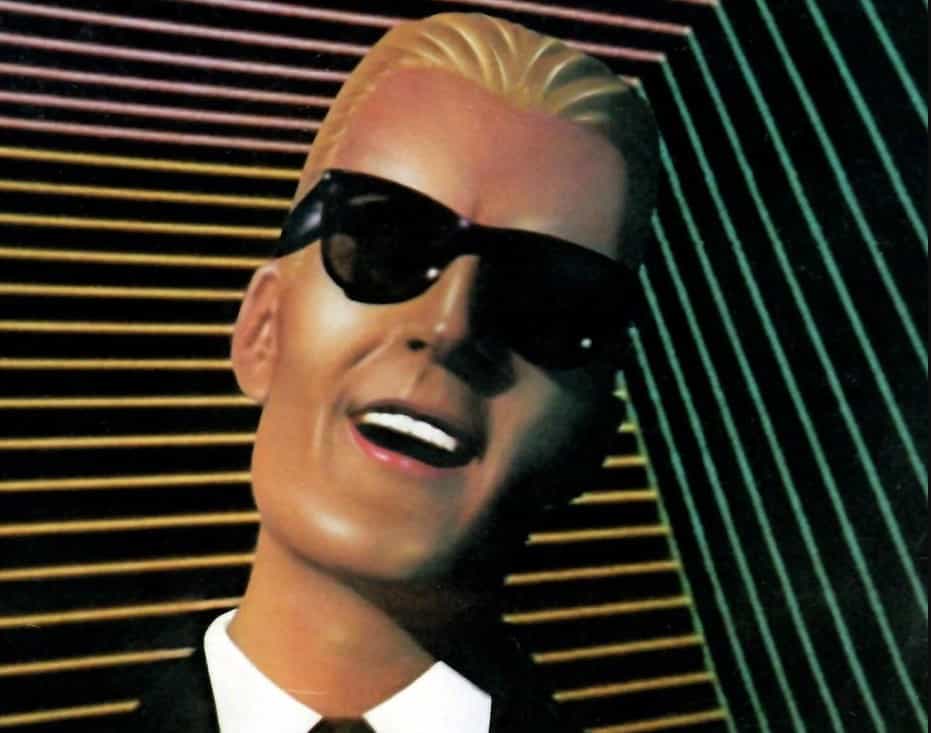
Max Headroom
3. The film’s first screenwriter wanted to recapture the magic of Rain Man
The first screenplay was written by Barry Morrow, who had won the Best Screenplay Oscar for Rain Man (1988). His screenplay for Super Mario Bros. bore striking similarities to Rain Man. It saw Mario and Luigi partake in an existential road trip. The similarities were so striking that the Super Mario Bros. production team called the script, “Drain Man”.
Morrow described his screenplay as, “A study in contrast, like Laurel and Hardy or Abbot and Costello.” The idea being it would have, “An odyssey and a quest like the game itself”. However, the film’s co-producer Fred C. Caruso said the story was, “More of a serious drama piece as opposed to a fun comedy”. It certainly didn’t sound like the type of film which young adolescents would flock to see.
4. The next screenwriters wanted to make their own version of The Wizard of Oz
The film’s producers decided to part ways with Morrow, and Jim Jennewein and Tom S. Parker was instead hired. Though they had no formal credits to their name, they just sold their script Stayed Tuned (a fantasy comedy which ended up being made in 1992) for $750,000, and were next in line to become Hollywood’s hottest screenwriters. They wanted to recapture the awe and magic of The Wizard of Oz (1939) by having the seemingly ordinary Mario brothers be transported into the weird and bizarre world.
The screenwriting duo made sure that their script had a more lighthearted tone, and set out to subvert fairytale clichés. This was something that Jennewein was immensely proud of, saying in interviews that they essentially did what Shrek (2000) would do several years later. The script was well-received by Nintendo. However, they had written it for Beeman to direct and when he was dropped from the project, the writers decided to exit the project as well.
5. The next screenwriters wanted to make their own version of Die Hard
Parker Bennett and Terry Runté were hired next to be the film’s screenwriters. They were best known for the thriller/comedy Mystery Date (1991).They were given the task by Morton and Jankel to add a science fiction flair to the film which they successfully did, and for once, everyone seemed to be on board with the project.
However, this graceful period wasn’t to last as suddenly Morton and Jankel claimed they no longer liked the script and wanted the film to be more like Ghostbusters (1984). Bennett and Runté did their best to appease the directors and incorporated the world of Dinohatten, an alternative reality where dinosaurs never went extinct and instead evolved to have the same intelligence as humans. By then, the financial backers were getting cold feet so Bennett and Runté were next for the chop.
The next pair of screenwriters to enter the scene were Dick Clement and Ian La Frenais. This screenwriting pair were veterans, who had worked on popular British sitcoms such as Porridge and The Likely Lads. They had also written the screenplay for Alan Parker’s The Commitments (1991) which had been quite popular at the Box Office and had received great reviews.
Clement and La Frenais’ first draft of Super Mario Bros. heightened the action aspect of the story and made it more action-based, like Die Hard (1988). However, it didn’t seem to land with the directors, the producers, or Nintendo. Their second draft seemed to do the trick as they ditched some of the more intense moments and made it more family friendly, and finally filming was ready to start. It was Clement and La Frenais’ script which managed to attract the likes of Bob Hoskins and Dennis Hopper to the project.
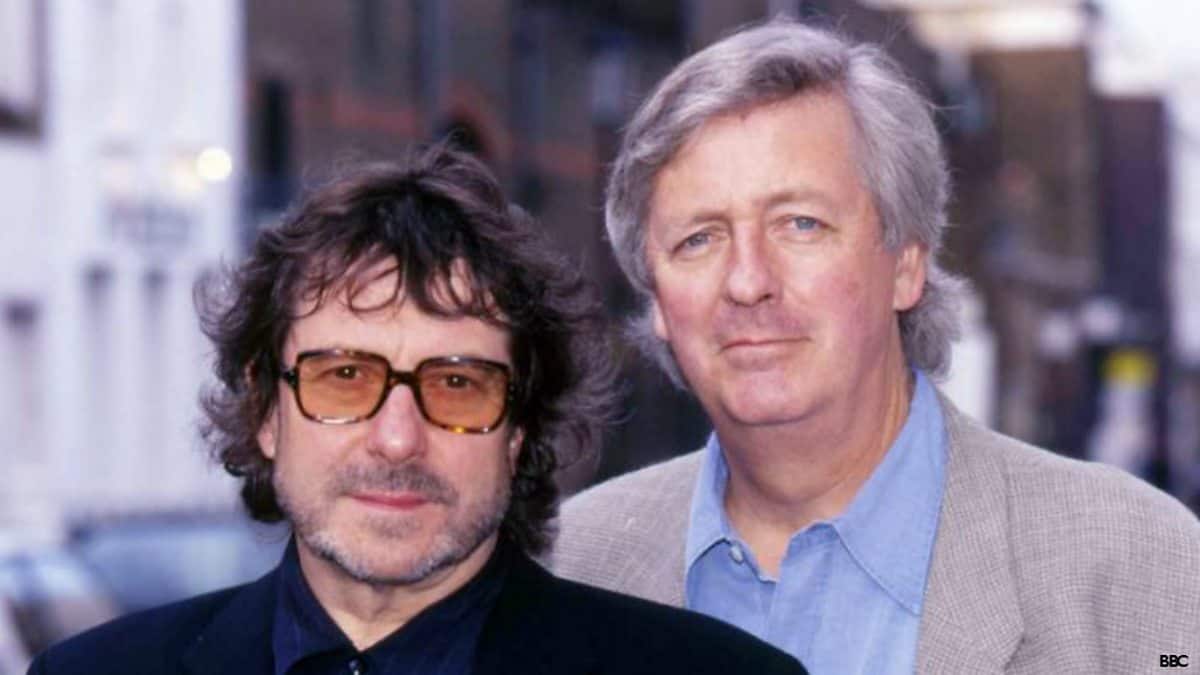
Dick Clement and Ian La Frenais
6. Mario could have been played by Danny DeVito
Before Bob Hoskins was officially cast, Danny DeVito and Bruno Kirby were both attached to play the role of Mario at different times. They weren’t the only actors considered. In fact a lot of big names such as Jim Belushi, Nicolas Cage, Michael Keaton, Kevin Kline, Joe Mantegna, Joe Pesci, Oliver Platt, Peter Onorati, John Turturro, and Nicholas Woodeson were all considered for the role of Mario. The producers believed Hoskins could pull in the numbers because of his recent roles in Who Framed Roger Rabbit (1988) and Hook (1991) but the actor was reluctant to star in another family film. In his own words he explained how he’d, “done Roger Rabbit. I’d done Hook. I didn’t want to become like Dick Van Dyke.”
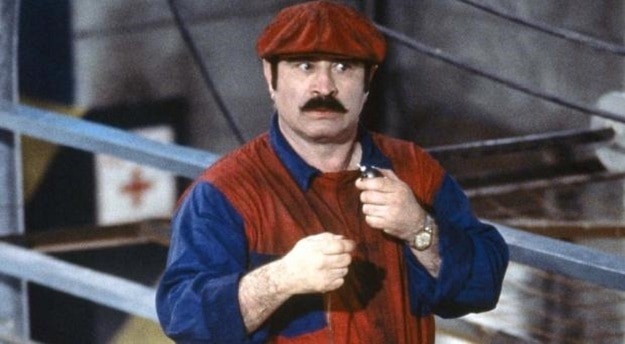
Bob Hoskins as Mario
7. Bob Hoskins had no clue the film was based on a video game
Bob Hoskins didn’t know that the film he was making was based on a game until his son asked him what he was working on. When Hoskins mentioned the film’s title, his son immediately recognized it and showed Hoskins the game on his own Nintendo Entertainment System.
8. Hoskins prepared for the role by becoming a plumber
Hoskins actually believed he was perfect for the role, and provided a great explanation why: “I’m the right shape. I’ve got a mustache.” He also did a bit of method acting, later explaining, “I worked as a plumber’s apprentice for about three weeks and set the plumber’s boots on fire with a blowtorch.” Talk about dedication!
9. Tom Hanks could have been Luigi
Tom Hanks was considered for the role of Luigi, but the failures of Turner & Hooch (1989) and Joe Versus the Volcano (1990) caused people to believe that Hanks was no longer a box office draw. Instead, the stand comic John Leguizamo was cast as Luigi, and despite the movie being a bomb it helped to launch his acting career.
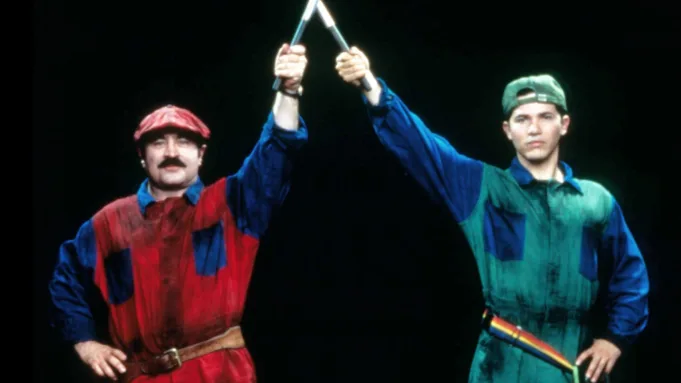
John Leguizamo as Luigi
10. King Koopa was a difficult role to cast
In 1993, Arnold Schwarzenegger was beginning to venture into the family friendly films that define that decade of his career. However, despite starring in the likes of Twins (1988) , Junior (1994) and Jingle All the Way (1996), Schwarzenegger chose to wisely turn down the role of King Koopa (the film’s antagonist). He wasn’t the only major star to turn down the role; Kevin Costner, Tim Curry, Sean Connery, Willem Dafoe, Al Pacino, and even Christopher Walken were all considered for the role. In the end it went to Blue Velvet (1986) star Dennis Hopper, who took on the role and later claimed he did it for his son (who was six at the time) to have shoes. Apparently, his son later told him “Dad, I don’t need shoes that badly”.
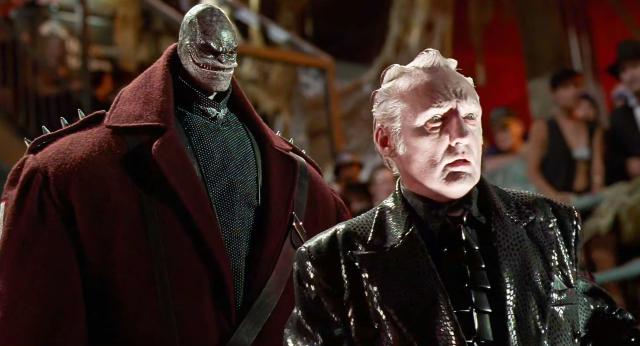
Dennis Hooper as Koopa
11. The Directors tried to jump ship
After all the roles had finally been cast, shooting was scheduled to start in North Carolina. However, producers Roland Joffé and Jake Eberts suddenly began to worry that the script was too dark and didn’t represent the whimsical nature of the video games. They passed on all the blame to the directors, whose egos had become massively inflated.
Two script doctors, Ed Solomon (best known for Bill and Ted’s Excellent Adventure (1989)) and Ryan Rowe, were hired to inject some much needed lightheartedness into the film’s script. All of this was done behind Morton and Jankel’s backs and when they found out they weren’t happy. They considered leaving the film but after much discussion between themselves, they decided that no other director would be able to understand the material enough to properly envision the project. In an interview with Variety they claimed that they felt they had to justify the script changes and convince the cast and crew to go along with it. All things considered, it would have probably been a good idea if they had actually left Super Mario Bros.
12. The directors were loathed by the cast and crew
With all the rewrites and changes, it was no wonder that resentment towards the directors began to brew among the cast and crew. Apparently, changes were happening so quickly, that Morton and Jankel weren’t even communicating with each other which only added to the confusion and frustration that the cast and crew felt . The film crew would regularly refer to them by insulting nicknames and even had t-shirts made that displayed rude comments made by the directors, although what these were exactly has never been revealed. Bob Hoskins was less than polite when describing the directing duo, calling them “the c*** and the cow”. In his memoir, Leguizamo wrote that Morton poured hot coffee on an extra, however Morton claimed that this was an incident that was blown out of proportion.
There is a behind the scenes documentary called Making The Shining (1980) that was shot by Kubrick’s daughter, Vivian. In Vivian’s footage we see some of the treatment Duvall endured. At one point, having just come round after fainting, Duvall complaining that her hair is coming out in clumps. Kubrick says to his crew, “don’t sympathise with Shelley.”
Shelley Duvall later said, “From May until October I was in and out of ill health because the stress of the role was so great. Stanley pushed me and prodded me further than I’ve ever been pushed before. It’s the most difficult role I’ve ever had to play.”
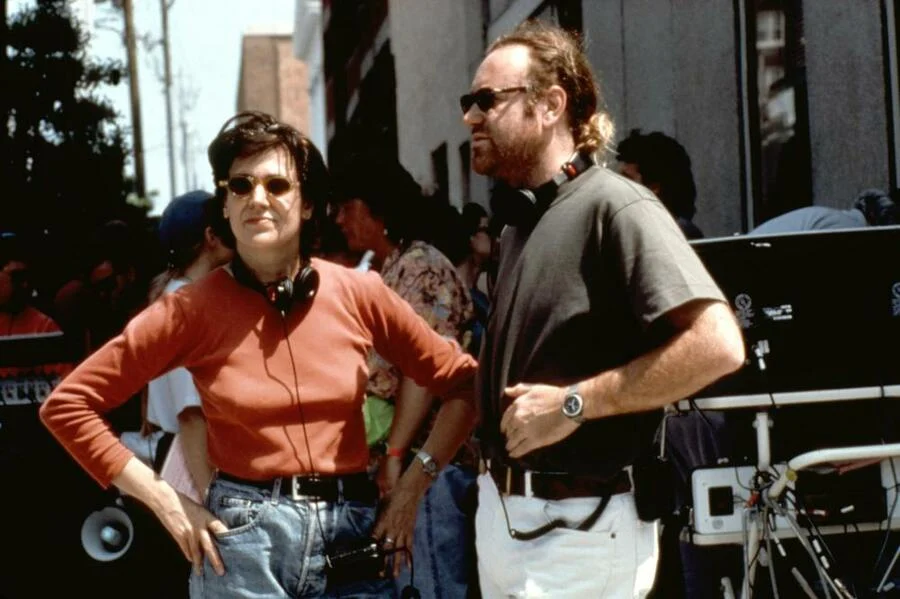
Rocky Morton and Annabel Jankel on the set
13. Both Dennis Hooper and Bob Hoskins described the production as a nightmare
Both leading actors had negative words when it came to describing their time on set. Dennis Hopper summed up his whole experience as, “A nightmare, very honestly, that movie. It was a husband and wife directing team who were both control freaks and wouldn’t talk before they made decisions. Anyway, I was supposed to go down there for five weeks, and I was there for 17. It was so over budget.”
In a 2011 interview with The Guardian, Bob Hoskins echoed Hopper’s sentiment stating that, “The whole experience was a nightmare. It had a husband-and-wife team directing, whose arrogance had been mistaken for talent. After so many weeks their own agent told them to get off the set! F***in’ nightmare. F***in’ idiots.”
14. Dennis Hopper lost his mind over script rewrites
Script changes would happen so quickly that actors did not bother learning their lines until the directors would call action because they knew it was likely to change. However, the constant changes made Dennis Hopper snap and he proceeded to go on a 45 minute tirade against the directors. As actor Richard Edson recalls in an interview with The Guardian, Hopper exploded and began, “Screaming at Annabel and Rocky. He’s telling them they’re completely unprofessional, that he’s never seen anything like this. Rocky says ‘Dennis, what is it?’ And he yells: ‘You rewrote my lines! You call this writing? This is sh*t! It’s sh*t! And the fact you’d do it without asking me?’ He went on and on. He couldn’t control himself.”
According to Edson, Hopper went on for so long that shooting had to be halted for lunch. The actor didn’t know how to quit though and continued to scream at both directors and the producers, whilst 300 extras were patiently waiting to shoot the next scene. In the end Hopper finally agreed to film the rewritten scene after arguing for over three hours with Morton and Jankel.
15. John Leguizamo accidentally broke one of Hoskins’ Fingers
The incident occurred after Leguizamo had been drinking all day on set, and was getting behind the wheel of the Mario Bros. van. When the directors yelled, “Action!” he panicked and slammed his foot on the accelerator, and then proceeded to hit the brake. This led to the van’s sliding door slamming shut on Hoskins’ right hand. Hoskins began swearing profusely and apparently incoherently (maybe because he was drunk along with Leguizamo). Still, the actor forgave Leguizamo almost straight away. This wasn’t Hoskins’ only accident on set. Hoskins also recalled being stabbed four times (although he never stated how this occurred), being electrocuted, and nearly drowning. Leguizamo didn’t get out unscathed either. Allegedly due to drinking on set (which both he and Hoskins were doing a lot of), he was hit by a car, resulting in a broken leg. And, you can even see his cast in some shots.
16. Strippers were used as extras
In an interview for GQ magazine, John Leugizamo let slip a little secret, “That party scene? Those were all strippers from North Carolina that they put on the set and they had them in the most revealing clothes and costumes.” The studio wasn’t happy though, and a lot of the footage had to be cut.
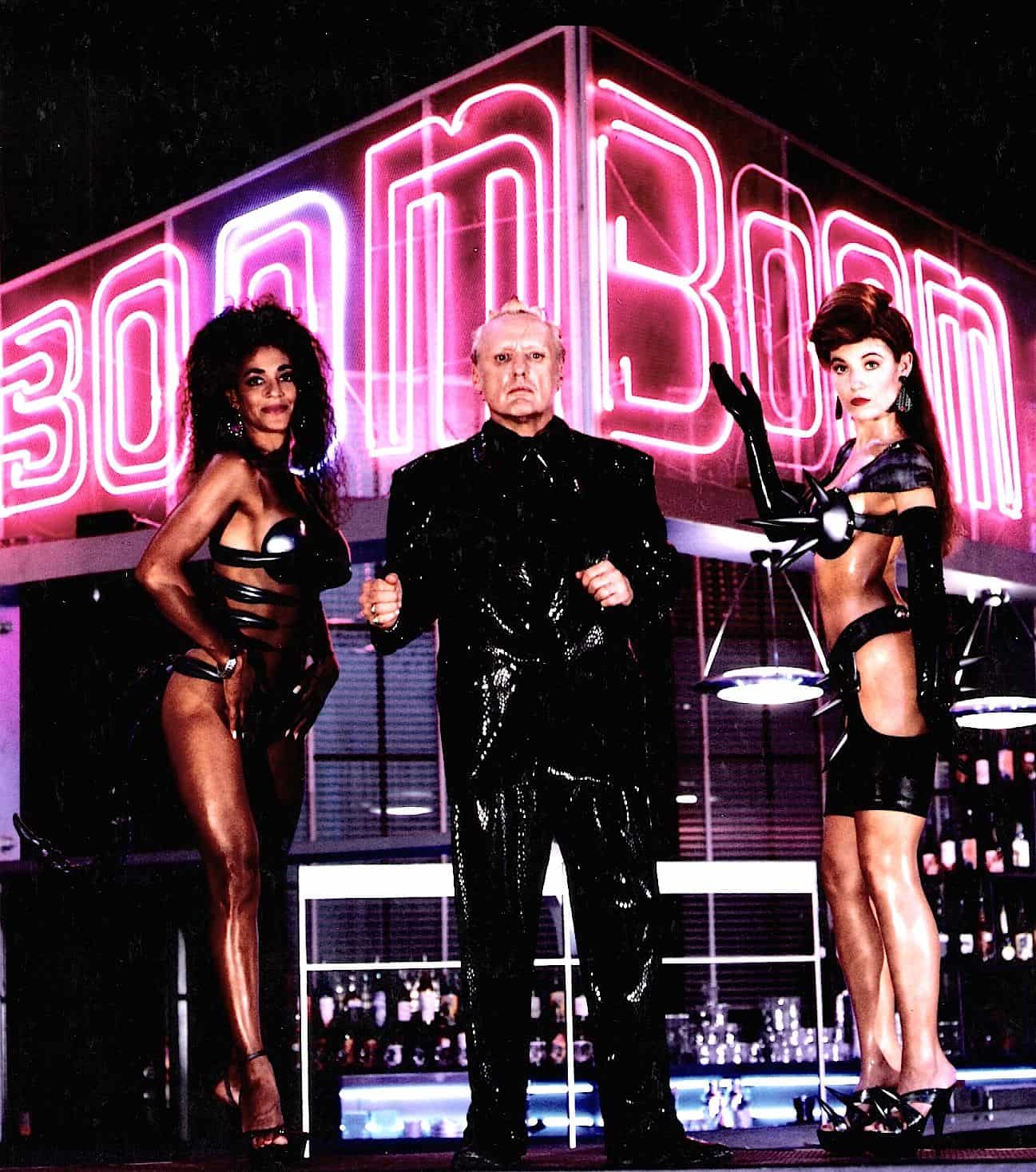
Koopa with two of the exotic dancers
17. The film was revolutionary in terms of CGI special effects
Despite the special effects looking dodgy by today’s standards, Super Mario Bros. was one of the first films to use the CGI software Autodesk Flame which helped to shape the direction of computer special effects. According to visual effects designer Chris Woods, “Super Mario Bros. was the first film that went through the Kodak Cineon film scanner and film recorder just for visual effects.” Autodesk Flame is now standard industry practice and has been used in every big budget special effects film that you can think of, from the Pirates of the Caribbean franchise to Lord of the Rings.
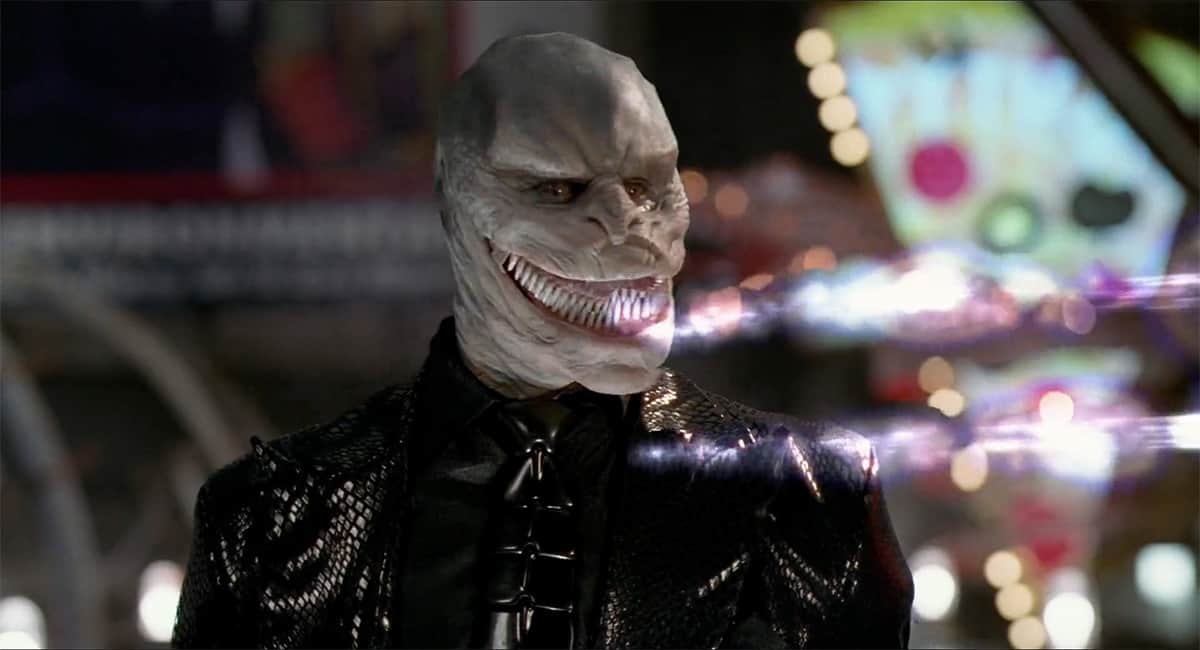
A VFX shot from the film
18. Critics were ruthless towards the film
The critics were not kind towards Super Mario Bros. In his review for the Los Angeles Times, Michael Wilmington described how it was a film, “Split in two: wildly accomplished on one level, wildly deficient on another.” Although he did praise the film for its special effects and the, “Sheer density and bravura of the production design”.
Janet Maslin of The New York Times took pity on Bob Hoskins, stating how he could, “Handle any role with grace and good humor”. However, Maslin was blunt when she described how the film didn’t, “Have the jaunty hop-and-zap spirit of the Nintendo video game from which it takes – ahem – its inspiration”.
Gene Siskel and Roger Ebert both gave the film a ‘thumbs down’ on their show Siskel & Ebert At The Movies. Their biggest criticism was the film’s inconsistent tone and overall lack of narrative. Unsurprisingly, the film was on their list for one of the worst films of 1993.
19. The Film Bombed at the Box Office
Despite having a budget of $48 million, the film ended up making just $38.9 million worldwide upon its release. Not surprisingly, a planned sequel was scrapped. The effect of the film’s financial loss is still seen today as Variety reports, “Today, the movie is not available on a single streaming platform.”
20. The Directors never made another Hollywood movie
After the box office failure of Super Mario Bros. Morton and Jankel kissed their Hollywood careers goodbye. In fact, Morton claims that they were, “Abandoned by Hollywood,” after the film’s release. Morton would go on to co-found the production company MJZ and focus on producing television commercials. MJZ has actually won several awards at Cannes Lions, a festival that champions creative advertisements. Jankel has continued to direct and was the director for 24 episodes of the music docuseries Live From Abbey Road. In recent years, the film has gained a cult following, with fans calling for a release of the director’s cut. After the success of the 2023 film, we might see that dream become a reality.
And you’ve reached the end – 20 super facts about Super Mario Bros. – one of the earliest video game movies. Please share on your social media channels, and subscribe to our YouTube channel for lots of great video content.
The beginning of a beautiful friendship
Stay up-to-date with all things All The Right Movies by signing up for our e-newsletter.
